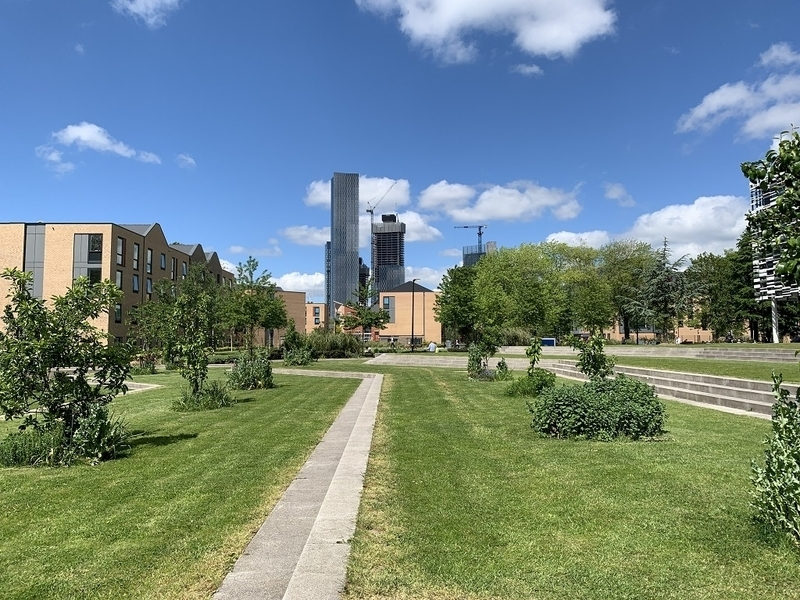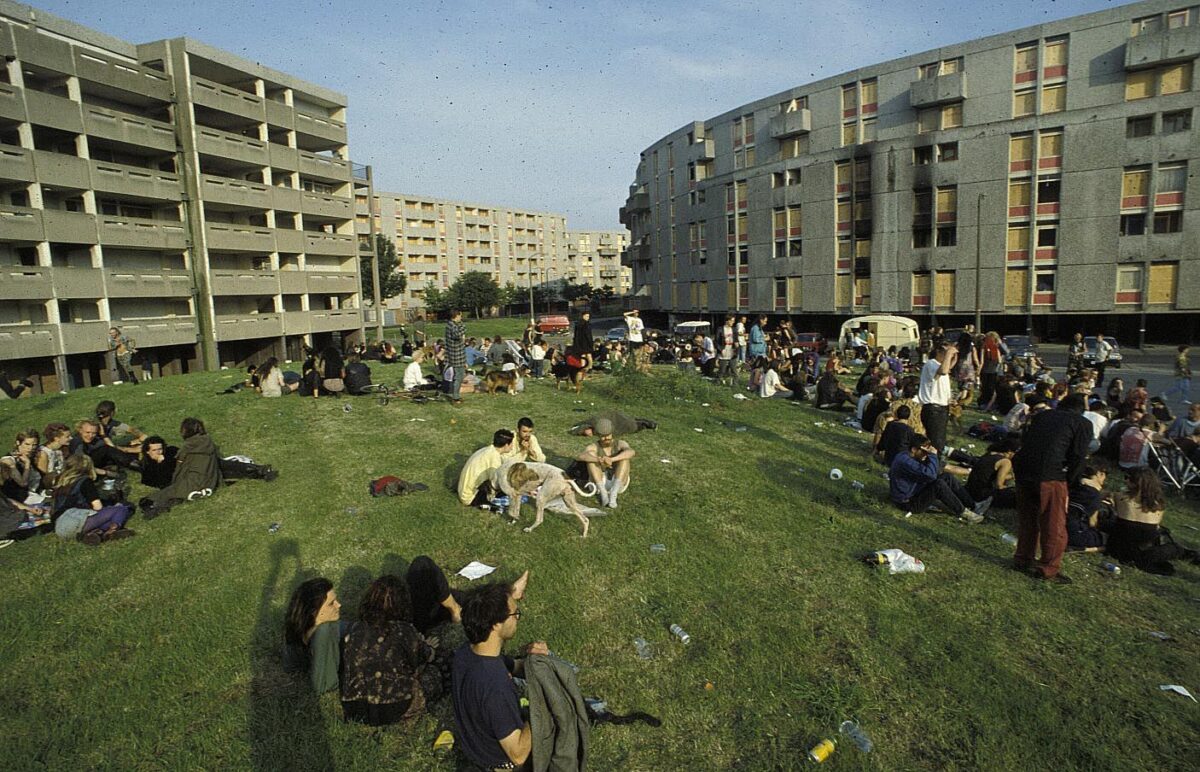This is the second in a series of articles about the kind of architecture that strikes a chord with me and why, brought to you because there are so many amazing buildings out there and too many of them pass us by.
Running a CGI company is an all-consuming, absorbing job…no two days are ever the same and because I have a passion for architecture and design, I’m lucky enough to find my work intrinsically intersesting. In fact, the more I work with different architects and bring their visions to life, the more I realise I should have trained to be one myself.
Feeding the imagination with fabulous architecture from across the globe in my day job, I’m interested to see if any of the inspiration behind designs like Sou Fujimoto’s L’arbre tower has been adopted in my home city of Manchester.
Perhaps the most famous buildings in the recent history of our city were the Crescents of inner city Hulme – arguably renowned for all the wrong reasons! Whilst the thinking behind these buildings was in line with Fujimoto’s concepts of increased social interaction and encompassment of nature, the reality that transpired in the 80s and 90s led to a thriving subculture of people on low or no incomes, living in what would be classed as appalling conditions by anyone not living in them, in what became an increasingly anarchic and infamous suburb of Manchester.
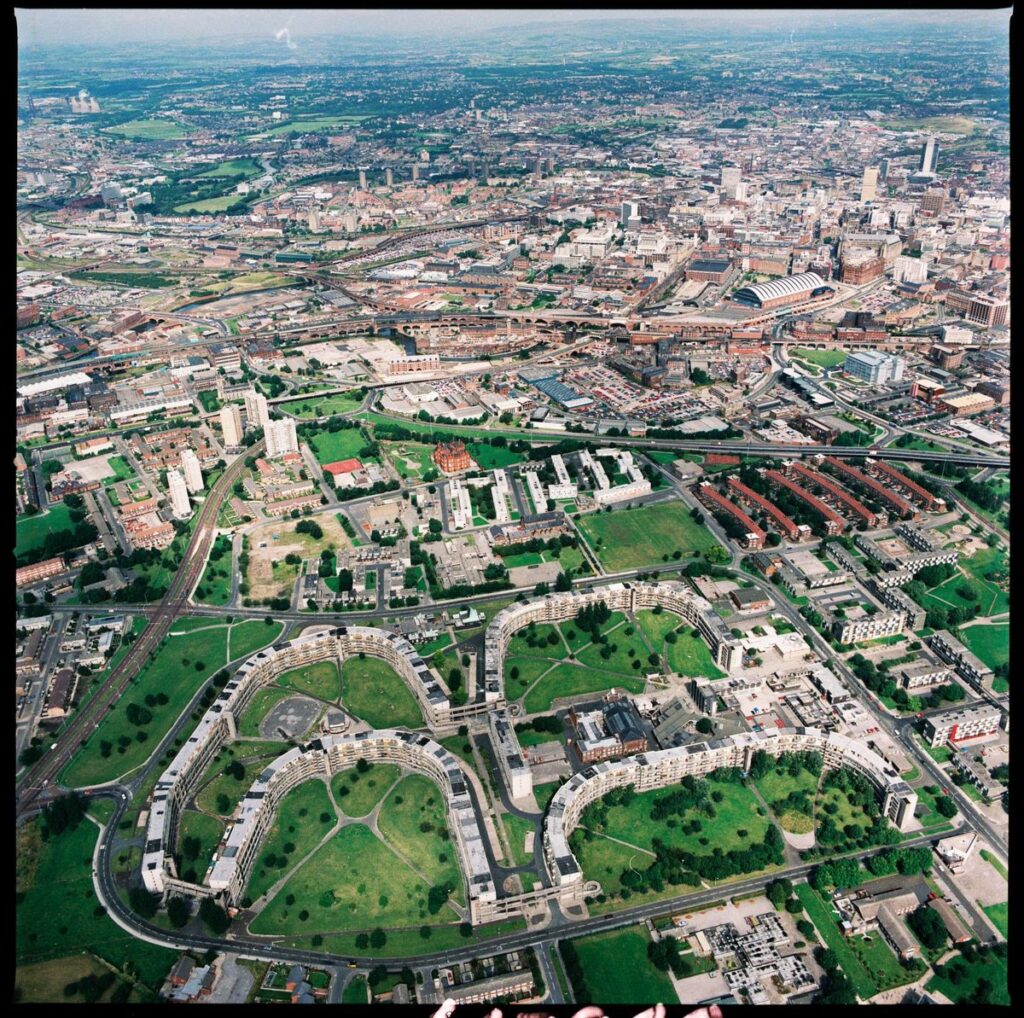
Why were the Hulme Crescents created?
The council’s goal was to transform terraced slums left over from the Victorian era, derided as “Endless rows of grimy houses: no gardens, no parks, no community buildings, no hope.” The Blitz had left Hulme damaged and in need of new housing to adapt to a growing population, and newer ideas blossomed about the best way to structure community life. It’s easy to see how Brutalist approach to architecture, emphasising practicality and flexibility, was attractive to Manchester developers. It was with this attitude that the Hulme Crescents were built. This positive attitude was expressed by Wormsley, one of the chief architects, “to achieve at Hulme a solution to the problems of twentieth-century living.”
When the development began in the 1960s, it was the biggest public housing development in Europe, with lofty ideals to match. Private balconies, children’s play areas, local shops, rooms built to be insulated against noise all sounded great on paper, and the buildings were designed with the well-meaning intent to improve community living.
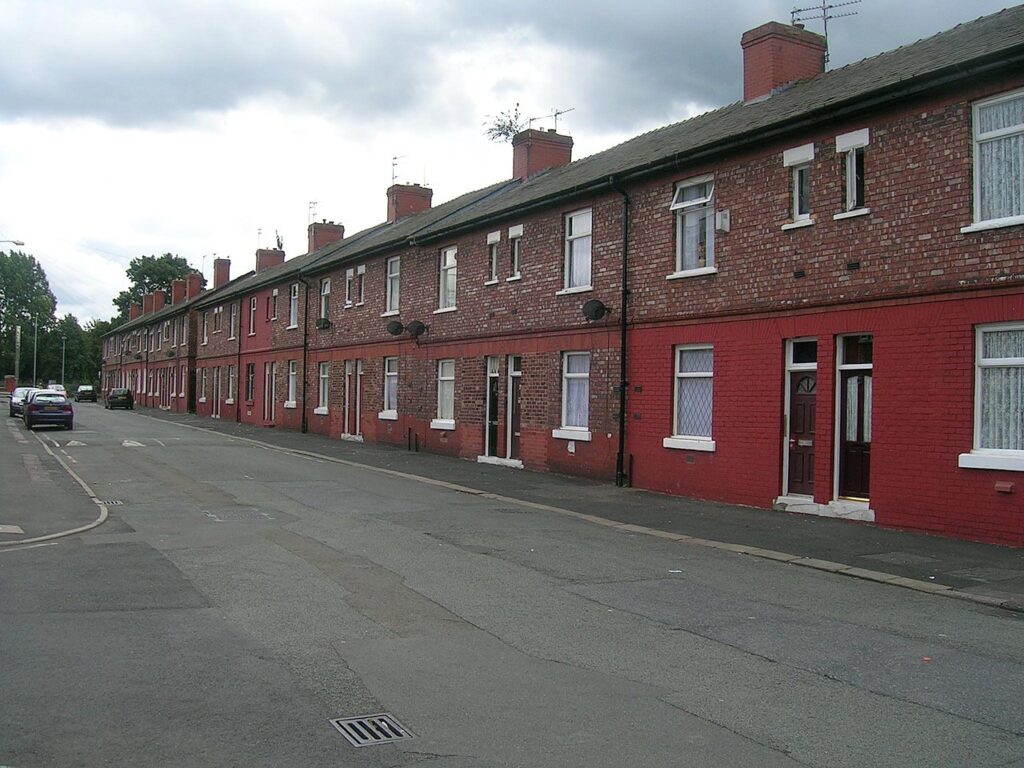
Building fast and cheap
The council wanted to build large, build fast and build cheaply, completing the Hulme Crescents over four years between 1968 and 1972, with a total of 918 dwellings. The problem with this approach became apparent as construction companies cut corners and cut out meaningful quality control. The design of the Crescents also cut off people from surrounding communities by abandoning a traditional system of roads and streets – apart from a walkway which connected them to the rest of the city, bordered by the Mancunian Way and the 4-lane Princess Parkway, the Crescents themselves were effectively cut off from the rest of Manchester.
Just two years after completion, the Hulme crescents were deemed as ‘adult only’ accomodation by the council after a 5-year old died falling from a balcony and most of the remaining families petitioned to be re-located. One survey in 1975 revealed that an overwhelming “96.3% of residents wanted to leave the Crescents and be re-housed.”
This was just the beginning. Pretty soon the inevitable effects of poor design started setting in: poor insulation and ventilation created severe damp, and provided a happy environment for mould, rats and cockroaches to thrive. The sprawling development also meant that first responders had a tough time responding to any emergencies, especially on the upper decks of the development. Not only that, but a wealth of asbestos meant that repairs and maintenance to the building required a great deal of care.
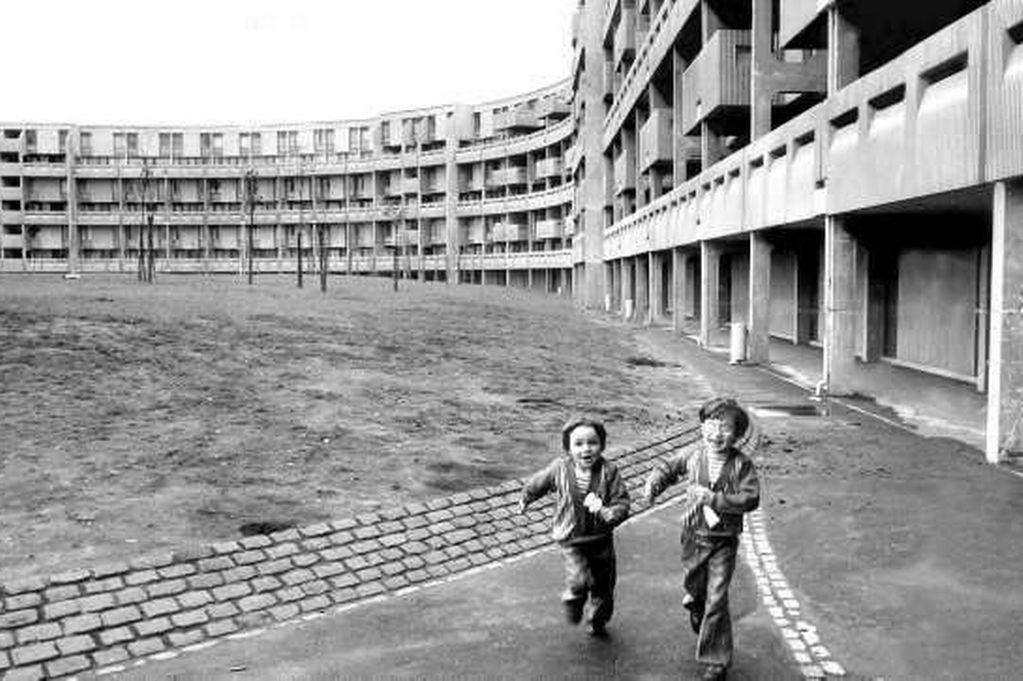
How new subcultures took over
The council eventually responded to these problems. How? Effectively by washing their hands of it. In an innovative manoeuvre, they let tenants pay no rent, evidently acknowledging how much of a debacle it had become. They didn’t have the money to demolish the developments, so they just…let them be.
In a sense, this manoeuvre did create community, but not in the way that was originally intended. No rent, and authorities that distanced themselves, meant that a Hulme subculture was able to spring up and develop into its own phenomenon. The poor, students and people without work coalesced around these estates and made it their own. Three flats at the centre were knocked through to create an infamous ‘club’ called The Kitchen and squat parties were a common sight. The extensive concrete walls and surfaces also attracted graffiti artists and others wanting to make their mark.
As a student in the 90s I spent time in the Crescents, though by all accounts their thriving subculture had already passed its heyday. Whilst there were some interesting parties involving burning TVs being thrown out of windows, what I mostly remember is the stink of dog urine (you literally had to hold your breath) as you went up the stairwells and shabeens where warm cans of lager were sold at any time of day or night in exchange for ‘everyone’s a winner’ raffle tickets. The small number of shops that served the area were mostly closed, their graffitied shutters mostly pulled down – you couldn’t step out of your front door without risking a mugging. By this time, half the squats were abandoned and the rest were populated by a criminal underclass living side by side with boho hangers-on, tenaciously hanging on to a subcultural ideal which had become a vague shadow of its former self.
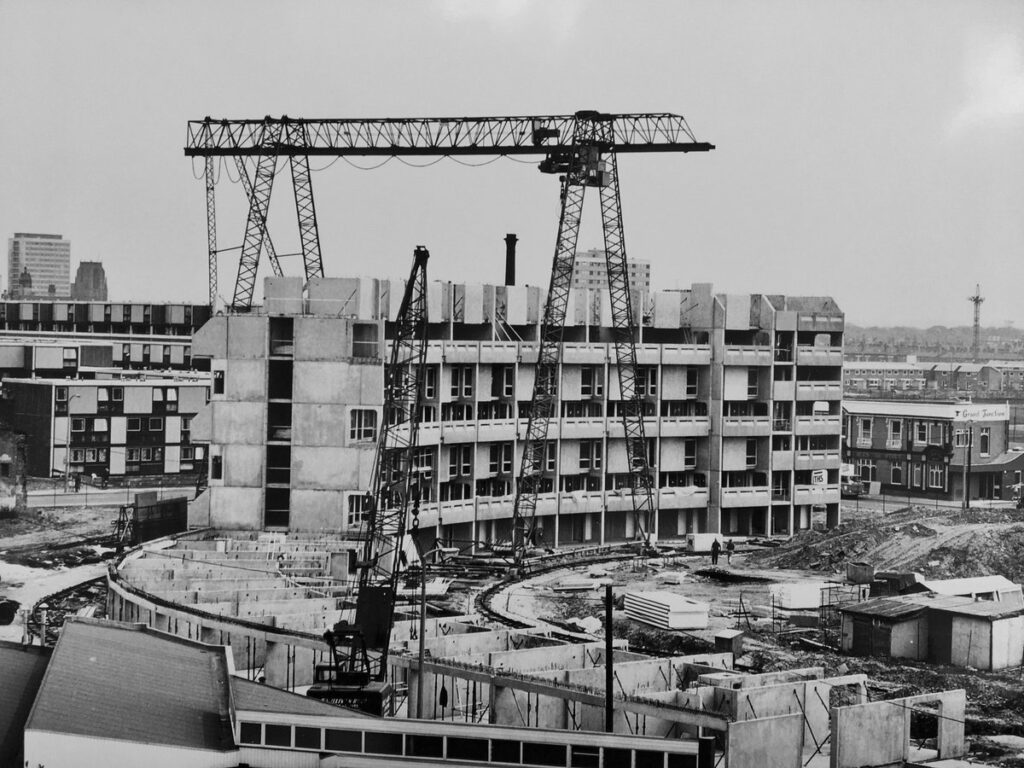
Saying goodbye to the Crescents
Even so, when the council begged the government for the money to demolish the Crescents in 1991 and received £31 million to do so, there was a great deal of resistance – despite the fact people were being offered alternative council accommodation in other parts of the city, proving that community is exactly that – despite the appalling living conditions.
Over the next couple of years, the Crescents were pulled down piece by piece, leaving residents and councillors with plenty of food for thought as for what would come next.
The perspectives they offered were highly instructive. Residents wanted: “More houses than flats, gardens, lots of greenery and safe areas for children.” Did the council even have to ask? Isn’t this what everyone wants, especially for growing families? More than this, they wanted to ‘partner’ closely with the council and housing associations to give future designs a rooted, ‘on-the-ground’ perspective. Hence the creation of Homes for Change, designed by urban environmentalists Urbed, a development built around the principle of community. Instead of top down decisions delivered by architectural idealists from a lofty height, residents themselves voiced what they wanted for their area and it was taken into account. There was a clear shift in cultural and public opinion which let go of the Brutalist movement and embraced a more collaborative approach to housing which focused on the needs of real residents.

Demolition begins, segment by segment.
A new Hulme
And…they got what they wanted. The government helped out with a whopping £400m development scheme, combining public and private investment, tailored to this new approach and completely transforming the area. Yellow brick houses stood in place of the old red-bricks, Hulme community garden was developed and real streets and shops returned to the area. Despite public opinion being wary of what Hulme would become, nowadays good quality housing sits close to the city centre at an affordable price (£174, 354 on average for a two-bed home) for any household bringing in two average incomes. Hulme park introduced much needed greenery and facilities including a children’s play area, football pitch, BMX and skate park.
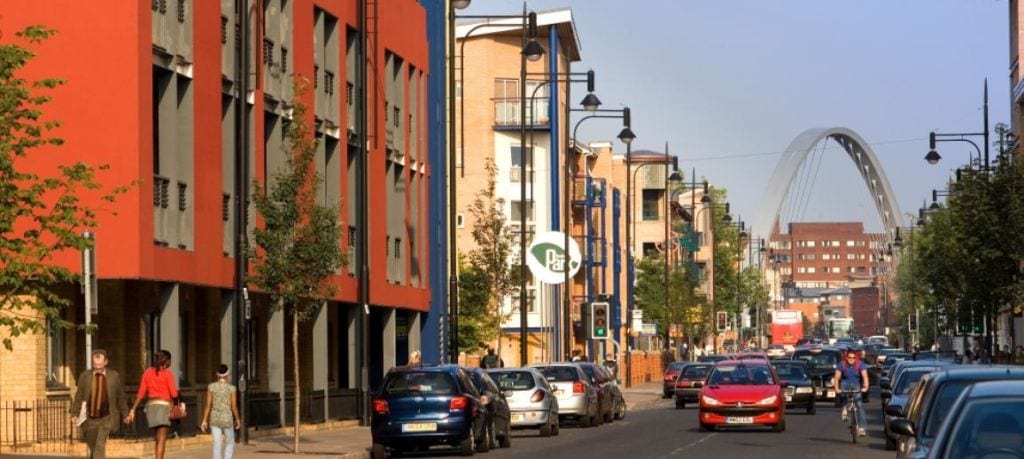
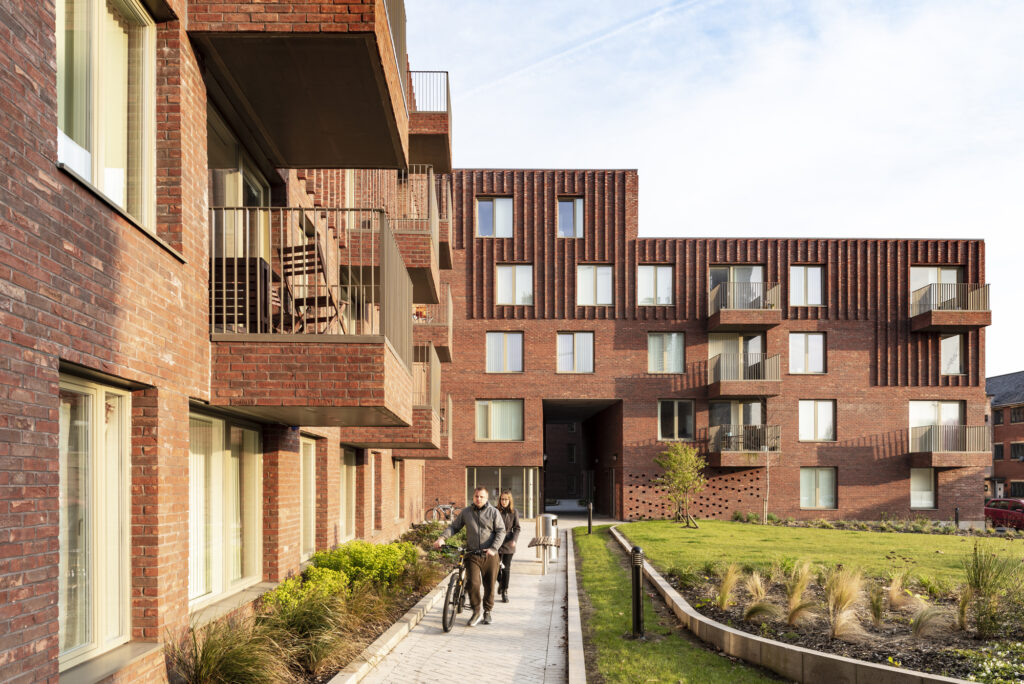
Lessons learnt
The Hulme Crescents were clearly a lesson in how not to deliver an ideal. The top down decision making process without a realistic visualisation of design combined with cost-cutting on implementation meant that those ideals had little chance of survival.
The more recent developments were borne of a different way of thinking: in answer to the swathe of opinion against demolishing the squats, the council made a point of listening to residents and created housing in line with what they actually wanted, even if it was primarily for a different set of residents from those who had lived in the Crescents themselves.
The Crescents may be gone, but they left a lasting legacy on Manchester’s thriving subcultures, music scene, art scene and innovative spirit. So whilst in their initial aims they failed it could also be argued that by necessity rather than design, they were a different kind of success in the face of their own failure.
